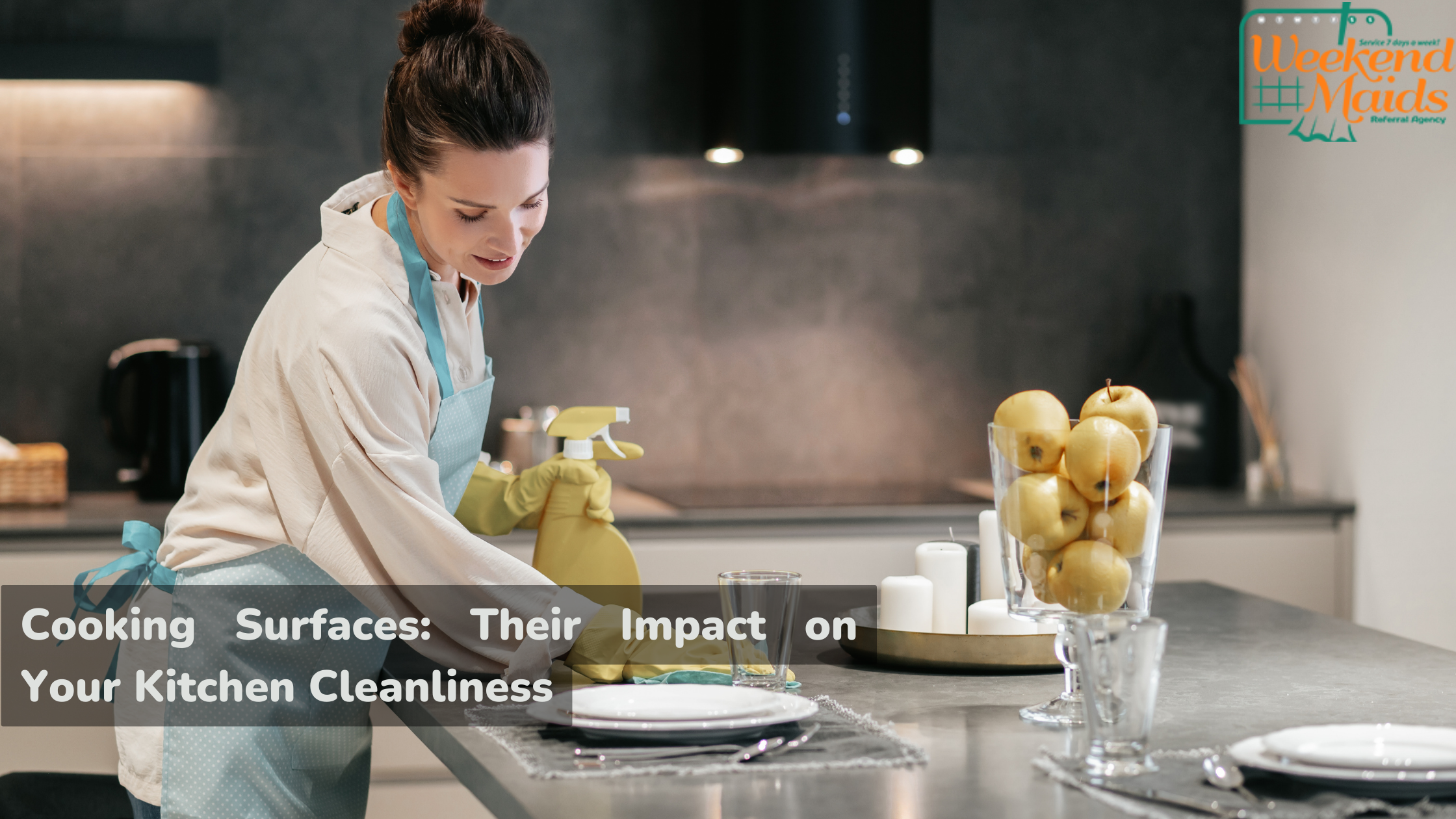
Cooking Surfaces: Their Impact on Your Kitchen Cleanliness
The kitchen, often hailed as the heart of the home, is where culinary magic unfolds daily. Within this hub of activity, the choice of cooking surface plays a vital role, not only in meal preparation but also in the cleanliness of your home. Each type of cooking surface has its own nuances when it comes to cleanliness and maintenance. In this insightful guide, we’ll unravel the differences between various cooking surfaces and explore how they impact the cleanliness of your kitchen and, by extension, your entire home.
1. Gas Stoves: The Culinary Workhorse
- Ease of Cleaning: Gas stoves feature easily removable burner grates and drip pans. They can be quickly cleaned with mild dish soap and water.
- No Electric Coils: Unlike electric stoves, gas stoves lack exposed electric coils, which can accumulate spills and grime.
- Continuous Grates: Some gas stoves have continuous grates, which make it easier to slide pots and pans across burners without lifting them.
2. Electric Cooktops: The Sleek and Clean Choice
- Smooth Surface: Electric cooktops are known for their smooth, glass-ceramic surface, which is easy to wipe clean.
- No Gas Burner Cleanup: You won’t have to deal with burner grates or drip pans, making electric cooktops less messy.
- Regular Maintenance: However, they can show stains and scratches more prominently, requiring regular maintenance to maintain their appearance.
3. Induction Cooktops: The Cutting-Edge Cleanliness
- Easy-to-Clean Surface: Induction cooktops have a smooth glass surface like electric cooktops, making them easy to clean with a damp cloth.
- Instantaneous Heating: Since induction heats the pot directly, spills are less likely to burn onto the surface, making cleanup a breeze.
- Cool Surface: The cooktop remains cool to the touch, reducing the risk of burnt-on spills.
4. Solid-Fuel Stoves: Rustic Charm with Maintenance
- Classic Appeal: Solid-fuel stoves, such as wood-burning or pellet stoves, offer a rustic charm to the kitchen.
- Ash and Soot: They require more maintenance due to ash and soot buildup. Regular cleaning of the firebox and flue is necessary.
- Efficiency: Solid-fuel stoves can be highly efficient, but they demand diligent cleaning and ash disposal to operate optimally.
5. Ceramic Cooktops: The Glassy Clean Surface
- Stylish Design: Ceramic cooktops often come with a sleek, modern design that enhances the kitchen’s aesthetics.
- Vulnerable to Scratches: They can be prone to scratches and damage from heavy or abrasive cookware. Special cleaning products may be required to remove stubborn stains.
- Caution with Spills: Spills can burn onto the surface if not promptly cleaned, and they may require specialized ceramic cooktop cleaners.
6. Range Hoods: Cleaning the Air
- Smoke and Odor Removal: Range hoods are essential for removing smoke, steam, and cooking odors from your kitchen.
- Grease Buildup: Over time, range hoods can accumulate grease, requiring regular cleaning to maintain their effectiveness.
- Filter Maintenance: Some range hoods have filters that need to be cleaned or replaced periodically to ensure optimal airflow.
7. Wall and Backsplash Surfaces: Protection and Aesthetics
- Tile and Grout: Tiled backsplashes and walls can accumulate grease and food splatters, necessitating regular grout cleaning.
- Easy-to-Clean Options: Stainless steel or glass backsplashes are easier to clean and maintain, adding a sleek and modern touch to your kitchen.
8. Countertops: Kitchen Workhorses
- Variety of Materials: Countertops come in various materials, including granite, marble, quartz, and laminate, each with its own cleaning requirements.
- Regular Wiping: Regardless of the material, daily wiping and cleaning are essential to prevent stains and maintain hygiene.
9. Flooring: Handling the Heavy Foot Traffic
- Cleanliness Challenge: Kitchen floors face heavy foot traffic and are prone to spills, making regular cleaning crucial.
- Tile and Vinyl: Tile and vinyl flooring are easier to clean, while hardwood requires more delicate care to prevent damage.
10. Sink and Faucet: The Cleanup Hub
- Faucet Material: Stainless steel and chrome faucets are easy to clean. Avoid abrasive cleaners that can damage the finish.
- Silicone Seals: Pay attention to silicone seals around the sink, which can accumulate mold and mildew if not cleaned regularly.
Conclusion: The Harmonious Symphony of Cleanliness
In your culinary symphony, the choice of cooking surfaces and kitchen elements plays a significant role in the cleanliness of your home. Each surface has its unique attributes and cleaning requirements, but all contribute to the overall harmony of a clean and inviting kitchen. Regular maintenance and cleaning not only enhance the appearance of your kitchen but also promote a healthier and more enjoyable cooking environment. By understanding the nuances of your kitchen’s surfaces, you can ensure that your culinary adventures are complemented by the cleanliness and hygiene that make a house a home.
